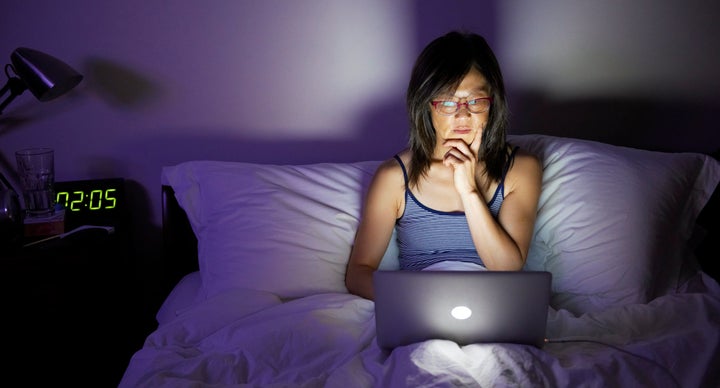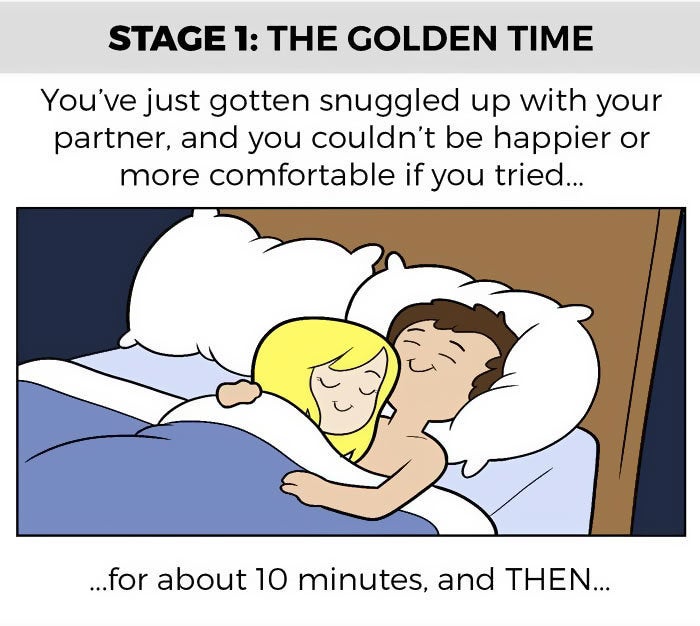
We’ve all heard about the Paleo diet. Essentially, it is based on eating only the types of foods assumed to have been eaten by early humans during the Paleolithic or Stone Age period (which lasted about 2.5 million years). This diet comprises mainly meat, fish, vegetables, and fruit. It has been asserted that this high protein/low carb diet is in harmony with the metabolic adaptations that evolved in humans. Although there are several caveats to this type of diet (for example, hunting and eating wild meat is vastly different from barbecuing modern domesticated meat purchased at Costco), overall, the benefits of the Paleo diet seem to outweigh the risks for most people.
In addition to our mostly processed-food diet, one feature of modern life that may have even more negative consequences for our evolved biology is light at night. Outside of the very highest latitudes, life on Earth evolved over the course of the past 3 to 4 billion years under the defining pattern of light only during the day and dark during the night. The temporal rhythm of our rotating planet was internalized in our bodies. Virtually, all organisms on the planet have self-sustaining, internal biological clocks. These clocks likely evolved to anticipate light and dark so that plants could efficiently orchestrate photosynthesis or counteract damaging redox reactions on a daily basis. As organisms became more complex, these internal clocks regulated not just metabolism, but other functions as well. In humans, virtually every aspect of our physiology and behavior, ranging from sleep, to hormone secretion, to body temperature regulation, and food intake, is mediated by our internal clocks.
These internal rhythms synched to the solar days are called circadian rhythms, and the biological clocks that generate circadian rhythms are called circadian clocks. In mammals, the main biological clock is located at the base of the brain in the hypothalamus and comprises a paired cluster of about 20,000 nerve cells. The term circadian is from the Latin, circa which means ‘approximately’ or ‘about’ and diem which means ‘day.’ If individuals are left in constant conditions such as a dark cave, then the internal circadian rhythms emerge—and they are not exactly 24 hours—hence the term, circadian. For example, if you were placed in a dimly lit cave for several weeks, your sleep-wake cycle might be about 24 hours and 15 minutes, but not precisely, 24 hours as it would be above ground where the circadian clock is being reset daily by exposure to light.
Indeed, exposure to the bright sunlight during the day resets the circadian clocks to precisely 24 hours each day. However, exposure to artificial light at night can derail this system and cause havoc with the temporal coordination of physiology and behavior. Exposure to light at night is pervasive in the modern world. A recent large-scale study investigating worldwide patterns of light pollution demonstrated that anthropogenic sky glow dominated over celestial light. Indeed, the Milky Way is hidden from view by light pollution for 80 percent of North Americans and 60 percent of Europeans. If you wish to see pristine skies, then visit Chad, Central African Republic, or Madagascar. Thus, light pollution has eliminated dark nights in many areas, which has widespread ecological consequences, as well as likely health consequences for people and our companion animals.
“Virtually every aspect of our physiology and behavior, ranging from sleep, to hormone secretion, to body temperature regulation, and food intake, is mediated by our internal clocks.”
Animal studies have reported that exposure to very low levels of light at night (5 lux—about the amount of light from a child’s night light 2 meters from your face), causes a host of problems for these rodents including increased risk of some types of cancer, impaired immune function, deranged metabolism, and alterations in cognition and mood. It appears that changes in the molecular clock mechanisms are altered by the light at night exposure causing widespread dysregulation of temporal coordination and optimal health. The full extent to which light at night affects our sleep remains unspecified, but it is well established that optimal brain health and function depends on excellent sleep quality and quantity.
Thus, it is important to practice good sleep hygiene. However, exposure to light at night, as well as lack of exposure to bright light during the day can influence circadian organization, and sleep is linked to this circadian system. Many people in modern societies are not exposed to much bright sun during the day or experience true dark at night, as did our Paleo ancestors. Importantly, exposure to low levels of daytime lighting is also implicated in disturbing circadian rhythms and the sleep-wake cycle. A recent study on lighting environments in the workplace demonstrated that workers in windowless environments experience poorer sleep quality, shorter sleep duration, and more frequent sleep disturbances as assessed by self-report and actigraphy (measurement of movement) recordings than people experiencing typical daytime light levels.
It is virtually impossible to do long-term experimental manipulations of the light-dark cycles on people. However, we do have some preliminary ways to examine the effects of circadian rhythm disruption on health. Night shift workers are exposed to light at night and often are not well-synchronized to their night shifts. These shift workers suffer from disturbed circadian and sleep rhythms for most of their occupational lives due to exposure to artificial light cycles and the interference of work hours with traditional sleep timing. Ailments that disproportionately plague the shift working population are frequently used as a barometer of physiological consequences of circadian disruption. In a way, night shift workers are thus serving as the ‘canaries in the coal mine’ to warn us about the dangers of artificial lighting. Epidemiological studies indicate that night-shift workers display higher incidence of a number of cancers, including breast, colon, and testicular cancers, mood (depression) disorders, cardiovascular diseases, and metabolic disorders compared to their colleagues working the same job on the day shift.
To focus on body mass regulation, there are a number of correlations between circadian disruption and body mass regulation in people. For example, as the use of electric lights increases, obesity and metabolic syndrome cases also increases across the globe. Exposure to light at night in home settings is associated with increased prevalence of obesity. Several large-scale epidemiological studies demonstrate that social jet lag (a shift in sleep schedule that many people experience during their days off, compared to work days) and night shift work may contribute to metabolic dysfunction and elevated body mass index (BMI). Circadian disruption causes several lifestyle and behavioral changes that may further affect metabolism. Most notably, circadian disruption can result in a mismatch between our circadian clock and the timing of food intake. Unconventional mealtimes due to shift workers’ schedules and social jet lag may contribute to metabolic disturbances. Indeed, timing of food intake is associated with both weight gain and the effectiveness of a weight loss strategy in humans. Indeed, several large epidemiological studies have indicated a direct relationship between obesity and light at night. For example, one study of 100,000 women in the United Kingdom reported that the odds of obesity as assessed by BMI, waist-hip ratio, and waist circumference increased in tandem to light at night exposure. This correlation was related only to exposure to light at night and was not related to sleep duration, alcohol intake, cigarette smoking, or physical activity.
It is important to note that the sensitivity of the circadian system is tuned toward shorter wavelengths (bluish light), specifically in the range of 460–480 nm. Sunlight reaching Earth is composed mostly of short wavelengths during midday, but those wavelengths become scattered at dusk, when the sun approaches the horizon, causing red wavelengths to predominate. Artificial lights produce different spectrums, depending on the type, but virtually all of our electronic devices (TVs, computer screens, smart phones, tablets, eReaders) emit mostly short wavelength light. Incandescent bulbs emit more peaks in the long wavelength (red) spectrum than in the green and blue spectra, whereas gas discharge lamps emit peaks in the shorter wavelengths. Choosing a lighting system with an appropriate spectral distribution, or filtering light to achieve such a distribution, can minimize disruption to the circadian system. For example, using redshifted lighting at night may be beneficial for humans and other mammals, whereas broad-spectrum light is appropriate for daytime indoor lighting. People who wore lenses to filter out blue wavelengths during simulated shift work normalized their melatonin rhythms compared to people without the lenses. Even in the home, spectral exposure can now be conveniently managed using products designed for this purpose. For example, “smart” LED lightbulbs can be programmed to adjust intensity and wavelength based on the time of day. In addition, there are free apps for smartphones and tablets that adjust the light emitted from the screens to red in the evening. Adolescents who wore blue-light-blocking lenses while using electronic media before bedtime were protected from the melatonin suppression and increased nighttime alertness associated with these activities. People exposed to amber (long wavelength) light for an hour prior to a cognitive test did better than individuals exposed to blue light for the same period of time. Of course, in the ideal scenario, daytime light exposure includes bright, natural light, and nighttime light exposure is minimized altogether.
Although the ability to flood the night with bright electrical light was a remarkable technological achievement, this technology was enthusiastically adopted prior to an understanding the importance of biological rhythms on our health and performance. Data on people remain mostly correlational, and the direct role of light at night remains to be established. However, there is no doubt that healthy sleep is necessary for optimal health, and sleep is regulated by our circadian rhythms. It seems prudent to curtail exposure to blue light during the night and maximize exposure to blue light during the morning in concert to what our Paleolithic ancestors experienced.
This piece is part of a special brain health initiative curated by Dr. Ali Rezai of The Ohio State Wexner Medical Center. For more, visit The Huffington Post’s Brain Health page.
